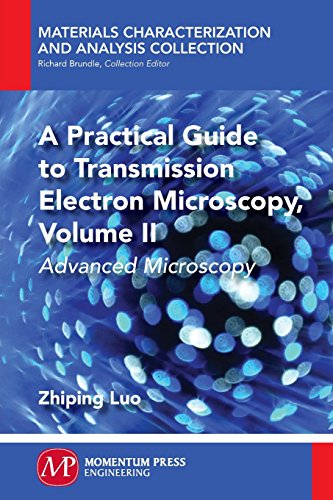(Ebook) A practical guide to transmission electron microscopy. Volume II, : Advanced microscopy by Luo, Zhiping ISBN 9781606509173, 9781606509180, 1606509179, 1606509187
Transmission electron microscope (TEM) is a very powerful tool for characterizing various types of materials. Using a light microscope, the imaging resolution is at several hundred nanometers, and for a scanning electron microscope, SEM, at several nanometers. The imaging resolution of the TEM, however, can routinely reach several angstroms on a modem instrument. In addition, the TEM can also provide material structural information, since the electrons penetrate through the thin specimens, and chemical compositional information due to the strong electron-specimen atom interactions. Nowadays, TEM is widely applied in diverse areas in both physical sciences (chemistry, engineering, geosciences, materials science, and physics) and life sciences (agriculture, biology, and medicine), playing a key role in research or development for material design, synthesis, processing, or performance. This book provides a concise practical guide to the TEM user, starting from the beginner level, including upper-division undergraduates, graduates, researchers, and engineers, on how to learn TEM efficiently in a short period of time. It is written primarily for materials science and engineering or related disciplines, while some applications in life sciences are also included. It covers most of the areas using TEM, including the instrumentation, sample preparation, diffraction, imaging, analytical microscopy, and some newly developed advanced microscopy techniques. In each topic, a theoretical background is firstly briefly outlined, followed with step-by-step instructions in experimental operation or computation. Some technical tips are given in order to obtain the best results. The practical procedures to acquire, analyze, and interpret the TEM data are therefore provided. This book may serve as a textbook for a TEM course or workshop, or a reference book for the TEM user to improve their TEM skills. Abstract: Transmission electron microscope (TEM) is a very powerful tool for characterizing various types of materials. Using a light microscope, the imaging resolution is at several hundred nanometers, and for a scanning electron microscope, SEM, at several nanometers. The imaging resolution of the TEM, however, can routinely reach several angstroms on a modem instrument. In addition, the TEM can also provide material structural information, since the electrons penetrate through the thin specimens, and chemical compositional information due to the strong electron-specimen atom interactions. Nowadays, TEM is widely applied in diverse areas in both physical sciences (chemistry, engineering, geosciences, materials science, and physics) and life sciences (agriculture, biology, and medicine), playing a key role in research or development for material design, synthesis, processing, or performance. This book provides a concise practical guide to the TEM user, starting from the beginner level, including upper-division undergraduates, graduates, researchers, and engineers, on how to learn TEM efficiently in a short period of time. It is written primarily for materials science and engineering or related disciplines, while some applications in life sciences are also included. It covers most of the areas using TEM, including the instrumentation, sample preparation, diffraction, imaging, analytical microscopy, and some newly developed advanced microscopy techniques. In each topic, a theoretical background is firstly briefly outlined, followed with step-by-step instructions in experimental operation or computation. Some technical tips are given in order to obtain the best results. The practical procedures to acquire, analyze, and interpret the TEM data are therefore provided. This book may serve as a textbook for a TEM course or workshop, or a reference book for the TEM user to improve their TEM skills
*Free conversion of into popular formats such as PDF, DOCX, DOC, AZW, EPUB, and MOBI after payment.


